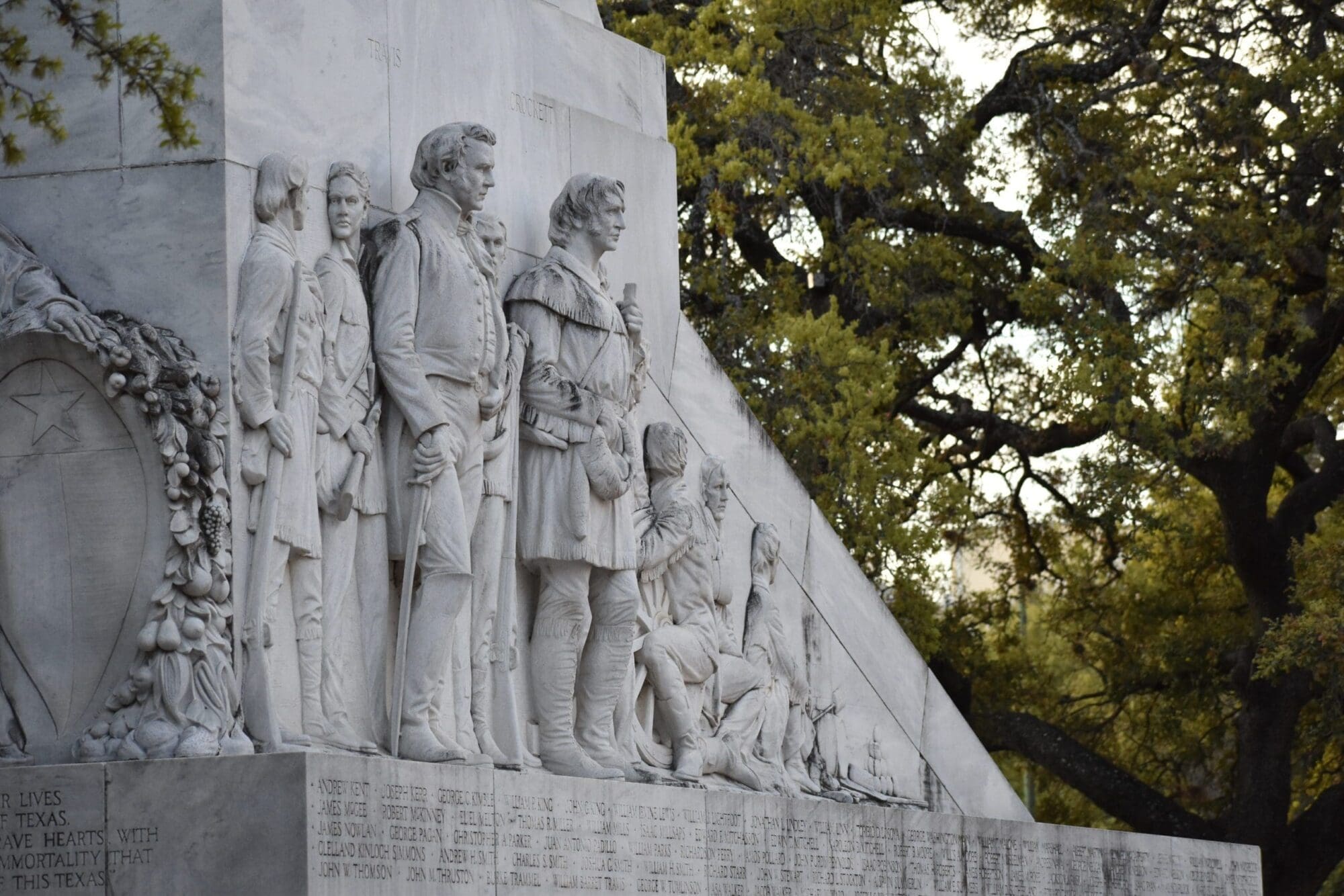In the latest chapter of the ongoing fight to “reimagine” the Alamo, state officials decided overwhelmingly to block the controversial plan to remove a historical memorial from the hallowed Texas battlefield.
Late Tuesday, the Texas Historical Commission voted 12-2 to keep the Alamo Cenotaph, a 60-foot-tall marble slab honoring the Alamo defenders, on the battlefield where the men fought and died in 1836.
The monument, also called The Spirit of Sacrifice, was built in 1936. It features inscriptions of the Texian and Tejano soldiers known to have fought in the pivotal struggle of the Texas Revolution and carvings of soldiers, including William Barret Travis, the commander of the small band of men who resisted the vast Mexican army’s assault of the Alamo fort.
San Antonio city officials wanted to move the Cenotaph outside the original walls to a nearby plaza as part of a controversial “reimagine” the Alamo plan, but the THC ultimately rejected their request after a nearly 10-hour meeting.
The virtual gathering on Tuesday also included six hours of public comment and an online poll, where over 29,000 citizens said they opposed moving the monument, and only 1,624 supported the idea.
“The Cenotaph should be located where the blood flowed,” said THC Chairman John Nau, adding, “Monuments to the fallen are placed where they fell.”
“To move it out of its place of honor is a diminution of that sacrifice,” said Commissioner David Gravelle.
“When I read words in a THC agenda like ‘relocating the cenotaph outside the historic footprint,’ that really bothers me,” said Charisma Villarreal, a descendant of Alamo defender Gregorio Esparza. “The Cenotaph itself is historical. I understand that it needs repairs, but HKS, the architect firm, has plainly stated that it can be repaired on-site.”
The question of preserving the monument was also presented to the over 2 million Republican voters in the March primary election, and over 97 percent voted to keep the Cenotaph where it is.
The monument has been one of the most contentious parts of the overall “Alamo Master Plan,” an estimated $400 million renovation project of the site put together by the General Land Office and the City of San Antonio. The plan has also been controversial for “reimagining” the history of the site and de-emphasizing the decisive 1836 battle, with San Antonio City Councilman Robert Treviño, the chairman of the project’s management committee, calling some elements of the Alamo narrative folklore and “bunk.”
“He wants to change history. He wants to erase history,” said Lt. Gov. Dan Patrick regarding Treviño.
“When Councilman Treviño … says that the Cenotaph must be moved to create a period-neutral plaza, it indicates to me that there’s an idea that we should de-emphasize the events of 1836,” said former Texas Land Commissioner Jerry Patterson.
Treviño argued that the whole Alamo renovation plan was in “jeopardy” if the monument stayed on the battlefield.
“With this failing today and the project not being executed the way it was prescribed as city council voted on it in 2018, it puts the whole project in jeopardy,” Treviño told reporters after the vote.
However, Patrick said the plan is still “moving forward,” though he has been critical of its management. He also said the revered site should describe the Alamo’s 1700s mission-era beginning but primarily focus on the pivotal battle of 1836, which he called “the most important 13 days in the history of Texas and Western civilization.”
“It’s not the end of the project. It doesn’t have to be the end of the project,” Patrick said. “Let’s think big. Let’s make San Antonio big. Let’s do this right.”





